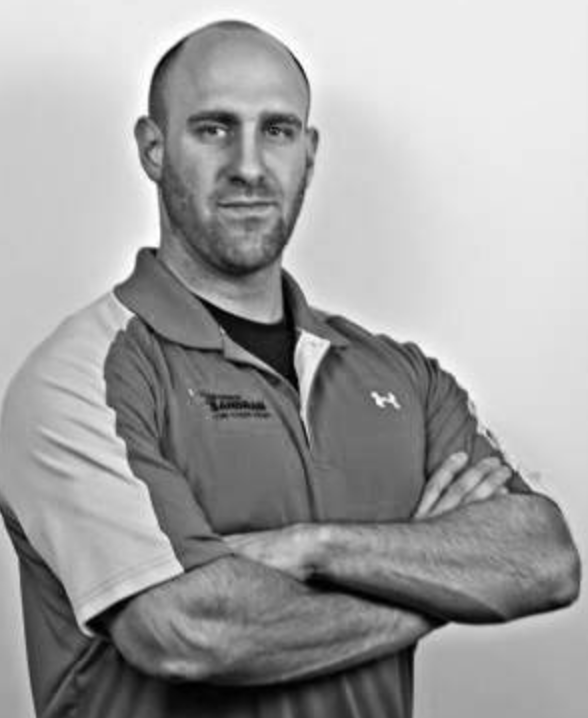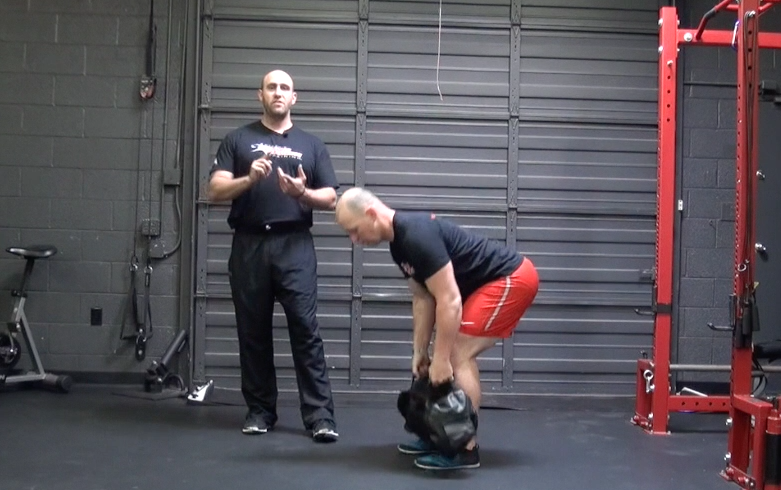Re-Thinking Functional Training
By: Josh Henkin
 The late 1990’s I was finishing my degree at in Exercise Science. I knew already that what I was being taught in school was a good 10 years behind what was actually happening in the industry. Fortunately, I had come upon some Strength Coaches that were revolutionizing not just performance training, but corrective exercise, and fitness in general.
The late 1990’s I was finishing my degree at in Exercise Science. I knew already that what I was being taught in school was a good 10 years behind what was actually happening in the industry. Fortunately, I had come upon some Strength Coaches that were revolutionizing not just performance training, but corrective exercise, and fitness in general.
Every week I would be anxious to look for updates from the industry leaders. Just to get some new ideas, see things in a new way made each weekly update feel like months. Yes, I am dating myself as today we get TONS of information on a daily basis. More information can’t be a bad thing, can it?
In today’s performance and fitness industry information is coming at us so fast it can be so difficult to not just read it with a critical eye, but even take it all in. Even though we know more about the body than ever, our techniques and methods have progressed very little. The overwhelming amount of information has caused two camps to develop.
One is the traditionalist that rejects any new information because things have “always been done this way.” While they may have some very effective methods, they fail to evolve and become eventually obsolete. Why? They never find that some of the new concepts are allowing coaches to accelerate the results with their athletes and clients and they fall very behind into the dark ages.
The other camp is those that jump on EVERY new thing that comes along. Their system changes completely every weekend because they are attending another course each week. The reality is they fade as well because they have no true system of addressing performance and fitness. In other words, people really don’t end up getting better, just doing different “stuff”.
What are we to do? I am always looking for simple answers. How can we take the information we are being provide and put into meaningful ways that we can see almost instant improvements in those we are working on making better. Yes, it really can happen that fast!
Philosophy vs. Methodology
Probably no concept has gone from hero status to being the butt of industry jokes like “functional training”. Does functional training really exist? Is it a fancy way of just renaming what we have done for years?
Some may argue this point. There are those that all functional training did was make our training sound smarter rather than actually improving. Instead of “leg day” we have “squatting patterns”, no more working on the arms we have “primal movements”.
Does functional training do really anything? The answer is yes, but the problem stems from not having a true methodology of what it looks like and the rules of functional training. Ask most industry professionals to define what functional training means and you may get an answer close to “ making you better at daily life.” That doesn’t sound bad does it? Well, if I ask you what is plyometrics you would probably discuss aromotization phases, volume of jumps, types of jumps, ground contact time, etc. You would provide me very definitive methods of how plyometrics are performed.
You see the problem with how we see functional training is that we have a philosophy versus a methodology. Therefore, we don’t know what makes up good functional training, how to progress it, and how to design specific goals.
Re-Thinking Functional Training
Far be it for me to completely change the industry, but I do want to provide a definition that at least gives us a framework to work from. In our Dynamic Variable Resistance Training (DVRT™) we think of functional training in the following manner….
“Functional training is the ability to execute high quality movement in all planes of motions during varying conditions while making highly efficient transitions from one pattern to another.”
Now, at first glance this may not really seem to solve any of our previously discussed issues. However, let me show how this definitely does start us down a good place.
Rule #1 the Movement Rules
University of Toronto professor and researcher, Dr. David Frost, once stated that the goal of training is to, “keep the standard and change the conditions.” While Dr. Frost was referring to the training of firefighters we can extrapolate this concept to any type of performance based program.
What is the standard? The movement! During our DVRT courses I often ask the students what is the difference between a deadlift and a hip hinge? I get quite a few blank looks due to the horrible S.A.T. feel of that question. No, it isn’t a trick and it isn’t that difficult. The answer is, a deadlift is a hip hinge a hip hinge doesn’t have to be a deadlift.
While this may sound like semantics, I give this example to help change the thought process that we need to focus on specific exercises versus the movement. In order to have us on the same page I am listing my movements below. You might be sorely disappointed that they aren’t too different from what you are already thinking. Yet, I will show you how our approach begins to differ quite quickly.
Movement Patterns:
-Hip Hinge
-Squat
-Lunging
-Locomotion
-Vertical Pushing
-Vertical Pulling
-Horizontal Pushing
-Horizontal Pulling
-Rotation
-Anti-Rotation
-Trunk Flexion/Extension
-Anti-Flexion/Extension
In any and every case the quality of the movement determines the level of or type of stress we add to the body. Duh! I know such a statement seems obvious, but I see all sorts of coaches make excuses for the movement deteriorating. Whether it is because they are “maxing out”, or they learn are using some “chaos” training, the quality of the movement ALWAYS come first.
As Dr. Frost mentioned, the standard is the movement. You will see the conditions that we create to challenge the body to maintain this standard is where functional training really begins to shine.
Rule #2 Master the Movement
Our second rule is quite a bit different from the highly popular saying, “master bodyweight before using load.” That philosophy simply does not work! We see in many instances that load actually helps us perform a better movement.
The squat is a great example of this being true. Most people squat alright to poorly with just their bodyweight, however, give them a load in a specific front position and all of sudden the squat gets much better. Whether you want to give credit to the weight giving a counter balance, or you believe it actives more core muscles that help us move better, the fact of the matter is we do see movement almost instantly improve. These people didn’t become just more flexible, fix muscles imbalances, or anything of the sort.
The moral of the story is that load can be helpful in learning movement. The rule shouldn’t be master bodyweight before adding load, but rather master movement before challenging it. How does that differ? In DVRT we speak about changing load position as a means of providing meaningful and unique stress to the body.
More load is designed to simply add stress to the movement. However, understanding placement of load allows us to create awesome progressive movements that we can begin to target very specific goals.
For example, in DVRT, we use the Press Out Squat to teach an individual how to create tension through the torso which helps allow the hips to move more freely. The exercise also gives counterbalance to the individual so that they can learn how to squat through space correctly. Far more efficient than just doing MORE bodyweight squat. After all, ever hear the definition of insanity?
On the other end of the spectrum we can use Primal Squats as a means to really challenge the squat pattern. It is always so interesting using this strategy with lifters that are use to lifting 3-4 times the load on the barbell rather easily. What’s so different with the Primal Squat?
When we think of squatting, we think of it as being only a sagittal plane movement. However, when we use the load in this particular way we add a strong frontal and transverse plane stress to the body. The “standard” is to make the squat look the same, the condition (changing the placement of the load), makes it quite challenging.
We also know more about how the body moves, whether you want to talk about fascial lines or cross patterning, these are important concepts to integrate into training. How do you do so? Well, drills like Primal Squats allow us to do this rather easily. You will see lifters shift, rotate, compensate with loads so much less than they are use to squatting, they can’t keep the standard!
If we understand this concept we can apply it to many movement patterns!
Rule #3 It HAS To Be More Incremental
One of the big reasons that people bailed on unstable surface training is that it was WAY too dramatic of a stress. Could you imagine if we loaded up an athlete with 100 pounds on one set and then 500 on the next? Yet, that is EXACTLY how we have approached instability training.
Why is it important? You may expect me to talk about stabilizer strength, core work, etc. Sure those things happen, but more importantly, instability challenges movement accuracy. We see it all the time when speed is introduced into a movement. Speed raises the instability of a movement!
How do we make instability more progressive? In DVRT we have some really easy strategies:
- Holding Position of Load
- Body Position During the Lift
- Instability of the Implement
- Plane of Motion
- Load
- Speed
Each one of these are concepts I could write extensively by themselves. They can be used individually or in combination to build some really great progressive exercises as well as expose the athlete to real functional concepts. In every case, guess what, maintaining the standard is still our goal!
My hope was to take this article as an opportunity to introduce these concepts. In the next installment we are going to cover how to actually incorporate them into your training programs. If you can be open minded enough to embrace and use these ideas, you are going to have a whole big world open up to you!
About the Author
 Josh Henkin, CSCS is creator of the Dynamic Variable Resistance Training (DVRT) system and Ultimate Sandbag. He has taught his DVRT system in over 12 countries worldwide and has appeared in some of the top publications such as the Wall Street Journal, Men’s Health, and over 10 other media outlets. His DVRT program is currently being used by professional sports teams, military units, and top fitness facilities all over the world. You can check out his program at http://DVRTFitness.com
Josh Henkin, CSCS is creator of the Dynamic Variable Resistance Training (DVRT) system and Ultimate Sandbag. He has taught his DVRT system in over 12 countries worldwide and has appeared in some of the top publications such as the Wall Street Journal, Men’s Health, and over 10 other media outlets. His DVRT program is currently being used by professional sports teams, military units, and top fitness facilities all over the world. You can check out his program at http://DVRTFitness.com


0 Comments for “Re-Thinking Functional Training”